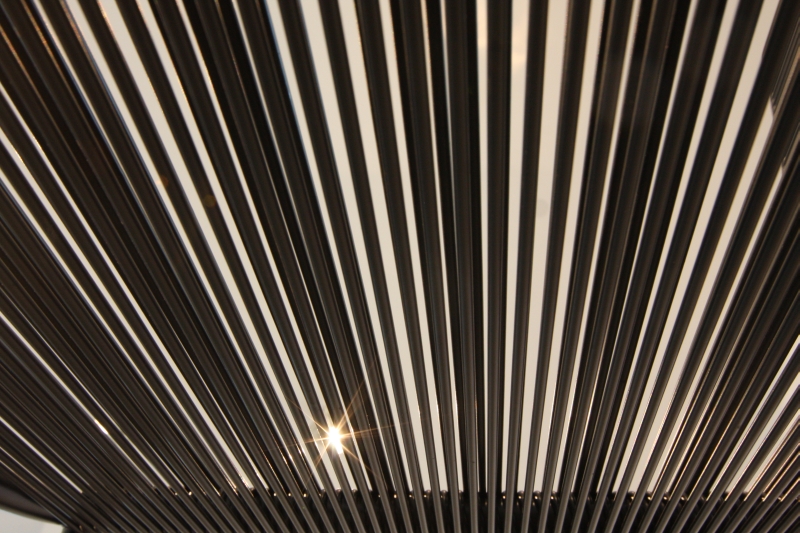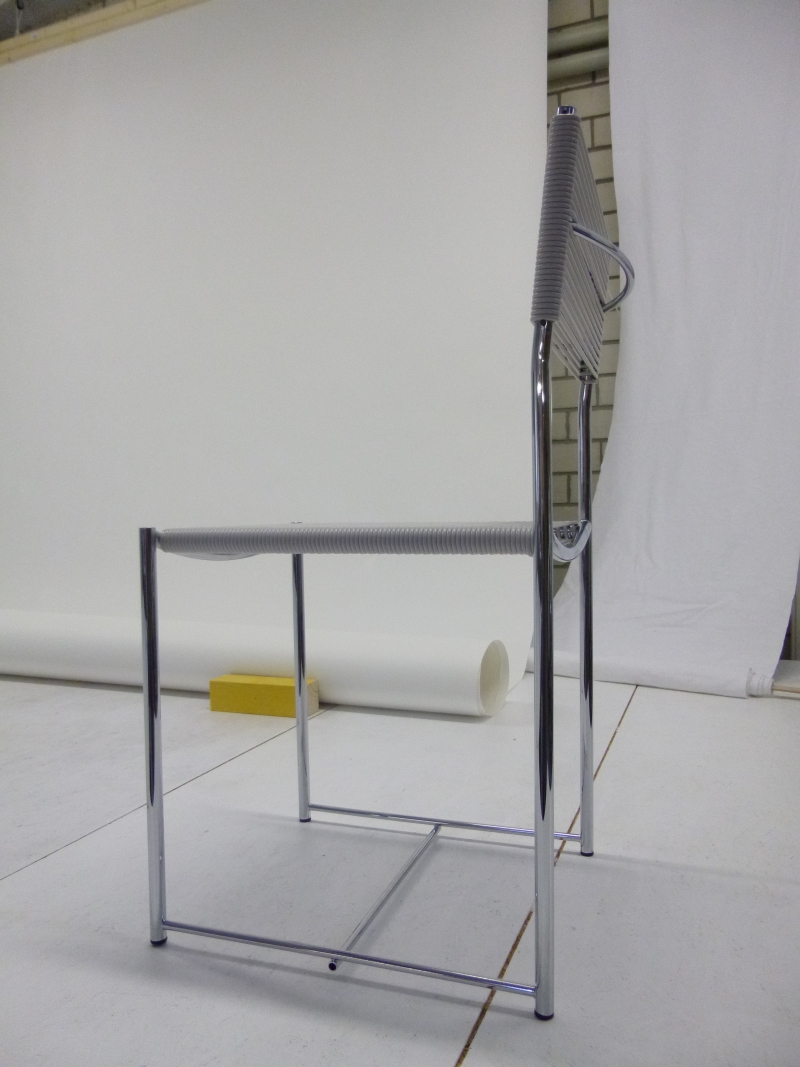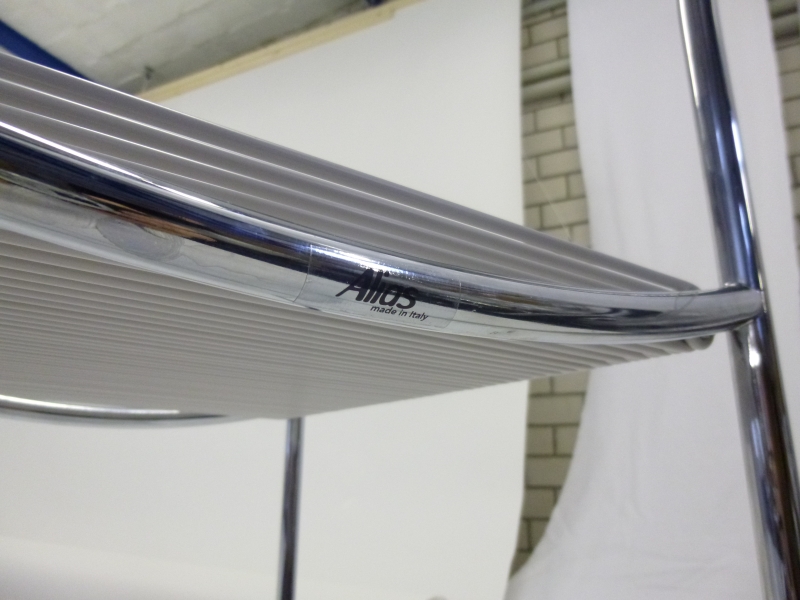Ask the person next to you to quickly sketch a "Bauhaus Chair"
And? What have they drawn?
We're guessing the result is relatively quadratic, reduced and, assuming the person next to you is au fait with the works of Mart Stam, Marcel Breuer et al, it will have at least one semi-circular bracket, either on the back or under the seat.
And it almost certainly closely resembles the Spaghetti Chair by Giandomenico Belotti for Alias.
A chair that, ironically, is born of a tradition at contrast to Bauhaus.

Giandomenico Belotti was born in Bergamo in 1922, studied architecture at the University of Venice and although he doesn't belong to the high Pantheon of Italian furniture architects, with his 1980 Spaghetti Chair he created one of those timeless furniture design classics that never loses its allure.
Constructed from steel tubing and PVC cord the Spaghetti Chair is an object with an unmistakable personality, and almost zero volume; thus making it perfect either for situations where space is at a premium, for example in a small flat or a balcony, or where one doesn't want the furniture to distract from the space - for example in a gallery or shop.
Equally impalpable is the chair's origin.
Despite it's obvious parallels to the furniture produced in the workshops at Bauhaus Dessau, the Spaghetti Chair has its roots in an another outpost of European modernist architecture; l'Architettura Razionale - Italian Rationalism - a relatively short lived movement that, essentially, sought to reduce architecture through the use of a limited number of standard, basic, forms.
An approach to architecture which of course Walter Gropius passionately rejected; his resistance to such "Typisierung" being one of the, many, reasons for the split between the Deutscher Werkbund und Bauhaus.
Although Italian Rationalism was an inter-war phenomenon, it experienced a revival in the 1960s largely through the influence of the Italian architectural historian Manfredo Tafur, and the University of Venice became its most important centre.
And so it is only fitting that it was a University of Venice alumnus who - through his intelligent and judicious use of very basic structures and materials - was to transform a particularly Italian architecture style into a universal furniture design classic.
A universal furniture design classic that forms a nice optical bridge between two very different approaches to modernism and so beautifully demonstrates that in design there are often several, equally valid, paths to the one solution. Or as Gandhi so very nearly put it "The way is the goal"
The importance and cultural value of the Spaghetti Chair can be measured in the number of museums who include the piece in their permanent collections; including the Triennale Milano, Vitra Design Museum and the MoMa New York.
Despite the universal appeal and acclaim for the Spaghetti Chair it was to remain Giandomenico Belotti's only notable contribution to 20th Century furniture design. However much as with "All the Young Dudes" by Mott the Hoople, the phrase "one hit wonder" is in this case no insult.
Rather recognition for a moment of majestic creative clarity: a moment that there is no real reason to try to top.
And the name. No it's not some form of self-parody or reflective marketing. The chair was originally called something else, something normal. Sensible even. And then, so the legend, at an exhibition in New York it was given its nickname on account of the resemblance of the PVC cords to a popular Italian durum wheat product.
And so, while the name may be painfully obvious, it is the only thing about the Spaghetti Chair by Giandomenico Belotti for Alias that is.

